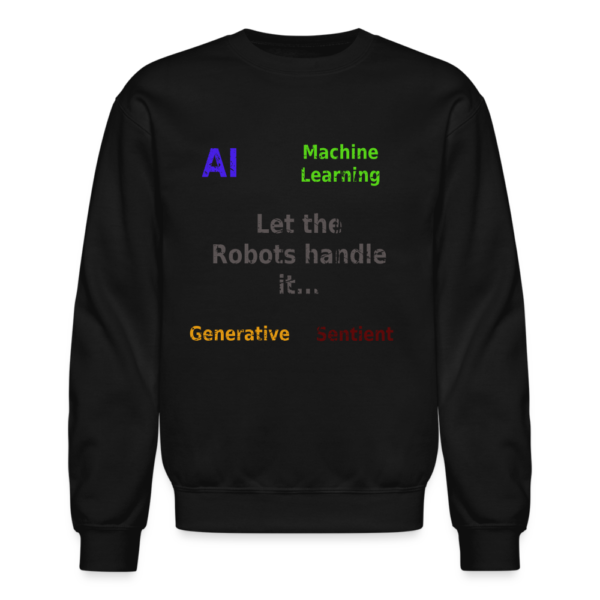Your cart is currently empty!
Tag: generative AI
Bytedance’s INFP: Transforming Media with Expressive AI
The digital age continues to evolve, and at its forefront stand groundbreaking innovations like Bytedance’s latest AI marvel, INFP. Announced recently, this AI system has the extraordinary ability to make any single image talk or sing expressively using audio files. Min Choi (@minchoi), a prominent figure in tech discourse, described the innovation as “mind-blowing,” and the implications indeed promise to revolutionize media production, podcasting, and beyond.
What is INFP?
Bytedance, the parent company of global sensations like TikTok and Douyin, is no stranger to redefining user-generated content. With INFP, the company has taken a significant leap into expressive AI. INFP allows users to input an image and synchronize it with any audio file, making the image appear as though it is speaking or singing. What sets it apart is its ability to replicate nuanced human expressions, making the generated content not just realistic but emotionally compelling.
This advancement builds on cutting-edge developments in deep learning, computer vision, and natural language processing. By analyzing the audio file’s tone, rhythm, and emotion, INFP adjusts the image’s facial movements, lip-sync, and even microexpressions to align seamlessly.
Min Choi’s Take on INFP’s Potential
Min Choi has long been recognized for highlighting tech trends that reshape industries. In a succinct yet impactful comment, “This is mind-blowing!” Min underscored the transformative potential of INFP. Beyond entertainment, this technology could redefine podcasting, virtual influencers, and even education.
For podcasters, INFP introduces an entirely new way to engage audiences. Instead of static thumbnails or generic visuals, hosts can use their likeness or other images to deliver content expressively. Imagine a single headshot of a host delivering an entire episode, dynamically reacting to their voice. This capability could reduce production costs while enhancing viewer engagement.
Key Applications of INFP
The versatility of INFP means its applications extend far beyond podcasting. Here’s a closer look at how various industries might leverage this revolutionary AI:
- Podcasting and Content Creation
Audio content creators can now add a visual dimension to their work. Whether for YouTube uploads of podcasts or social media snippets, the ability to make static images talk can bridge the gap between audio and video formats. - Virtual Influencers and Marketing
Virtual influencers are gaining traction, and INFP could propel this trend further. Brands could create expressive virtual personalities from simple images, using pre-recorded scripts to interact with audiences. - Education and E-Learning
Educational institutions and e-learning platforms can use INFP to make static diagrams or illustrations more interactive. For example, a historical figure’s portrait could “narrate” their biography in a history lesson. - Entertainment and Gaming
From animated music videos to dynamic NPCs (non-playable characters) in video games, INFP opens new creative avenues for storytelling and immersion. - Accessibility
INFP can also aid in accessibility, providing lip-synced visuals for the hearing impaired or transforming written content into expressive, spoken-word video.
Technical Insights: How INFP Works
At the core of INFP’s innovation are advanced neural networks designed for image processing and audio synthesis. It uses a combination of:
- Generative Adversarial Networks (GANs): These enable INFP to generate lifelike visuals based on static images.
- Audio-to-Visual Synchronization Models: These ensure the image’s movements align with the audio input in real-time.
- Emotional AI: By analyzing the emotion embedded in the audio file, INFP enhances the realism of facial expressions and gestures.
Bytedance’s expertise in optimizing algorithms for large-scale consumer use ensures that INFP is not just a lab experiment but a scalable solution ready for real-world applications.
Challenges and Ethical Considerations
While INFP promises exciting possibilities, it also raises significant concerns:
- Deepfake Misuse
The ability to create hyper-realistic talking images can be exploited to spread misinformation or create malicious content. Robust safeguards and detection tools will be critical. - Copyright Issues
Using images or voices without proper rights could lead to legal complications. Users and developers must navigate these waters responsibly. - Cultural Sensitivity
As with any generative AI, the potential for unintentional biases or culturally insensitive outputs remains a risk. Developers must ensure that INFP respects diversity. - Over-reliance on AI
The ease of content creation with INFP might reduce demand for traditional artistic skills like animation or videography. Balancing innovation with cultural preservation is essential.
What’s Next for INFP?
Bytedance’s unveiling of INFP represents just the beginning. As AI technology evolves, it’s likely that future iterations will include multi-image animations, real-time video integration, and even multi-language support. Combined with AR/VR, INFP could redefine virtual interactions, making digital avatars indistinguishable from real human presenters.
The Competitive Landscape
Bytedance isn’t alone in exploring expressive AI. Competitors like OpenAI and Google have also developed systems that bridge the gap between static visuals and dynamic interactions. However, Bytedance’s edge lies in its deep integration with content-driven platforms like TikTok. With INFP, Bytedance could dominate a niche where creators seek user-friendly tools for expressive content.
Public Reception and Social Media Buzz
The excitement surrounding INFP is palpable. Min Choi’s post alone garnered widespread attention, sparking discussions across social media platforms. Creators, marketers, and educators are eager to experiment with this tool, while tech enthusiasts speculate on its long-term implications.
How to Stay Ahead in the INFP Era
For businesses and individuals looking to harness INFP’s potential, here are some strategies:
- Embrace Experimentation:
Dive into the technology to understand its capabilities. Early adopters often gain a competitive edge. - Prioritize Ethical Use:
Transparency and respect for intellectual property are paramount. Ensure you have the rights to images and audio files used. - Focus on Storytelling:
While the technology is impressive, content remains king. Use INFP to enhance narratives rather than relying solely on novelty. - Invest in Training:
Equip your team with the skills to use tools like INFP effectively, blending technical expertise with creative vision.
Conclusion: The Dawn of a New Content Era
Bytedance’s INFP is more than just a tool—it’s a glimpse into the future of content creation. For podcasters, marketers, educators, and beyond, this innovation offers unprecedented opportunities to engage audiences in dynamic ways. As Min Choi aptly noted, this development is indeed “mind-blowing,” and its ripple effects will likely shape digital media for years to come.
Whether you’re a creator eager to explore new horizons or a business looking to captivate your audience, INFP signals a transformative shift worth embracing. The journey into expressive AI has only just begun, and the possibilities are as boundless as the imagination itself.
Vintage Let the robots handle it – ai ml generative sentient Crewneck Sweatshirt
$24.99Vintage Let the robots handle it – ai ml generative sentient Crewneck Sweatshirt. Embrace the future in style with the Vintage ‘Let the Robots Handle It’ Crewneck Sweatshirt! Perfect for AI lovers who know it’s best to let the machines do the work—because why not let the sentient beings take over?
-

Hungry and Humble Football Player Flapping Arms Touchdown Celebration Unisex Classic T-Shirt #philly
$19.99 Select options This product has multiple variants. The options may be chosen on the product page -

Africatown in Philly Phrase Unisex Classic T-Shirt
$13.99 Select options This product has multiple variants. The options may be chosen on the product page -

Vintage Funny Cat Selfie UFO Alien Invasion Unisex Classic T-Shirt
$13.99 Select options This product has multiple variants. The options may be chosen on the product page -

Vintage Philly Underdogs German Shepherds Unisex Classic T-Shirt
$9.99 Select options This product has multiple variants. The options may be chosen on the product page
————————————————
We use AI GPT Chatbots to help with our content and may get some things wrong.
————————————————-
- Podcasting and Content Creation
Per @technology @Salesforce to Hire Over 1,000 Workers for Generative AI Agent Product: A Sign of the Ongoing Need for Human Touch in AI
The rapid rise of artificial intelligence (AI) is reshaping industries across the globe. From automating mundane tasks to providing personalized experiences, AI is at the forefront of innovation. However, despite its significant advancements, the need for human involvement in the development, sales, and support of AI technologies remains essential. Salesforce, one of the world’s leading customer relationship management (CRM) companies, is a prime example of this balance between cutting-edge technology and human expertise. The company recently announced plans to hire over 1,000 workers to sell its new generative AI agent product, underscoring the importance of human engagement in this nascent age of AI.
The Generative AI Revolution
Generative AI has been one of the most talked-about advancements in technology in recent years. Unlike traditional AI, which focuses on analyzing and categorizing data, generative AI creates new content, whether it’s text, images, or even code. This transformative technology has already made waves in industries like content creation, marketing, customer service, and even design.
For companies like Salesforce, generative AI is seen as a tool that can significantly improve the customer experience. Salesforce’s generative AI agent product aims to assist businesses by enhancing automation, personalizing interactions, and streamlining workflows. However, despite its potential, the complexity of generative AI means it is far from a one-size-fits-all solution.
The Role of Salespeople in AI Adoption
While AI has the potential to revolutionize many aspects of business, its adoption is not a simple process. Implementing new technologies requires a deep understanding of both the product and the specific needs of the customer. This is where Salesforce’s decision to hire over 1,000 new workers comes into play.
The company’s new hires will focus on selling its generative AI agent product, helping customers understand how it can enhance their operations. Even though generative AI can automate many tasks, the nuances of how AI solutions can be tailored to a company’s needs require human intervention. These workers will play a critical role in bridging the gap between AI technology and the businesses that can benefit from it.
Salesforce is betting on human expertise to drive AI adoption, understanding that personalized consultations and guidance will be essential for customers as they navigate the complexities of integrating generative AI into their existing systems. Salespeople will need to possess a deep understanding of both AI’s capabilities and the unique needs of various industries to effectively pitch the new product and show businesses how it can address their specific pain points.
The Infancy of Generative AI
Generative AI is still in its early stages, with new applications and use cases emerging every day. While some industries are eager to adopt AI solutions, others remain cautious, unsure of how best to leverage this technology without losing the human element that has always been at the core of business success.
Despite its incredible potential, generative AI is not infallible. AI systems can still struggle with ambiguity, misinterpret context, and generate content that is not entirely accurate or appropriate. This is where human involvement becomes critical. As businesses integrate generative AI into their workflows, humans will be needed to supervise, correct, and refine the output produced by AI systems.
Moreover, AI is not a replacement for human creativity, empathy, or strategic thinking. In industries like sales, marketing, and customer service, the personal touch is still incredibly valuable. Customers expect not only efficient solutions but also meaningful interactions with brands. Human salespeople play a vital role in ensuring that AI tools are used in ways that enhance customer relationships rather than replace them entirely.
Why Salesforce is Focusing on Human Labor for AI Integration
Salesforce’s decision to hire over 1,000 workers to sell its generative AI product highlights the company’s understanding of the importance of human touch, even in an era of AI. Despite the company’s emphasis on AI-powered solutions, it recognizes that human employees are still essential for guiding businesses through the complexities of AI adoption and ensuring that AI is used ethically and effectively.
The company’s investment in hiring a significant number of workers also signals its commitment to building a robust ecosystem around its generative AI product. The workers will not only sell the product but will also act as consultants, helping customers understand how they can integrate AI into their existing workflows. This personalized service is crucial, especially for companies that may not have the technical expertise to understand the full capabilities of generative AI.
Furthermore, the human workforce will provide ongoing support and training, helping businesses adapt to the constantly evolving AI landscape. As AI continues to improve, so too must the strategies for its application. Salesforce’s workforce will ensure that customers are equipped with the knowledge and support they need to keep up with these changes.
The Evolving Role of Humans in the AI Age
The rise of generative AI and other advanced technologies has sparked a debate about the future of work. Many worry that AI will replace jobs, leading to widespread unemployment and economic instability. While it is true that AI has the potential to automate certain tasks, the reality is more nuanced.
AI is a tool, not a replacement for human expertise. It can enhance productivity, improve decision-making, and free up employees from repetitive tasks, but it cannot replicate the creativity, empathy, and critical thinking that humans bring to the table. In the case of Salesforce, the company is not replacing workers with AI but rather enhancing its workforce with the power of AI. The new hires will work alongside AI technologies to provide a better, more personalized customer experience.
As businesses increasingly adopt AI, the demand for workers with a blend of technical and interpersonal skills will grow. Salespeople, marketers, customer service representatives, and consultants will need to develop new expertise to navigate the complexities of AI. These workers will play a crucial role in ensuring that AI is used responsibly and effectively, aligning with both business goals and customer needs.
Conclusion
Salesforce’s plan to hire over 1,000 workers to sell its generative AI agent product highlights a key trend in the AI era: the ongoing need for human expertise. While AI is undoubtedly a transformative technology, it is still in its infancy, and businesses require human workers to help integrate these tools into their operations effectively. Human involvement remains crucial in ensuring that AI is used in ways that benefit customers and drive business success.
Rather than replacing humans, AI is enhancing the roles that people play in business, allowing them to focus on higher-level tasks while AI handles routine work. As the technology continues to evolve, the balance between human touch and AI will become increasingly important, with companies like Salesforce leading the way in integrating the two seamlessly.
In the end, while generative AI holds immense potential, it is clear that the human element will continue to play a vital role in shaping the future of business technology. AI may assist with tasks, but it is the people behind the technology who will make sure it’s used wisely, ethically, and to its full potential.
-

Hungry and Humble Football Player Flapping Arms Touchdown Celebration Unisex Classic T-Shirt #philly
$19.99 Select options This product has multiple variants. The options may be chosen on the product page -

Africatown in Philly Phrase Unisex Classic T-Shirt
$13.99 Select options This product has multiple variants. The options may be chosen on the product page -

Vintage Funny Cat Selfie UFO Alien Invasion Unisex Classic T-Shirt
$13.99 Select options This product has multiple variants. The options may be chosen on the product page -

Vintage Philly Underdogs German Shepherds Unisex Classic T-Shirt
$9.99 Select options This product has multiple variants. The options may be chosen on the product page
————————————————
We use AI GPT Chatbots to help with our content and may get some things wrong.
————————————————-
-
Join Jiatao Gu ( @thoma_gu )at COLM Conference in Philadelphia: Exploring Intelligent Visual Deductive Reasoning
Exploring Intelligent Visual Deductive Reasoning at COLM Conference: Join Jiatao Gu
As the field of artificial intelligence continues to evolve rapidly, conferences like the COLM (Conference on Learning and Multimodal Data) provide a vital platform for researchers and practitioners to share groundbreaking insights and developments. One such expert, Jiatao Gu, will be in attendance at the upcoming COLM conference in Philadelphia, bringing attention to the intriguing topic of intelligent visual deductive reasoning.
Event Details
- Who: Jiatao Gu (@thoma_gu)
- Where: COLM Conference, Philadelphia
- When: October 9, 11:00 AM – 1:00 PM
- Session Type: Poster Session 5, Poster #146
Jiatao Gu will present his research on “How far are we from intelligent visual deductive reasoning?”, a topic that delves into the intersection of generative AI, machine learning (ML), and multimodal data processing. This research aims to explore how advanced AI systems can interpret and deduce information from visual data, potentially revolutionizing industries reliant on visual comprehension, such as healthcare, automotive, and security.
The Significance of Intelligent Visual Deductive Reasoning
Intelligent visual deductive reasoning refers to an AI’s ability to analyze images and videos, extracting meaningful insights that can lead to informed decision-making. This capability holds immense potential across various applications:
- Healthcare: Automating the analysis of medical images, improving diagnosis accuracy, and reducing the burden on healthcare professionals.
- Autonomous Vehicles: Enhancing navigation systems through better interpretation of surroundings, leading to safer driving experiences.
- Security: Developing smarter surveillance systems that can identify unusual activities in real-time, improving public safety.
Why Attend Jiatao Gu’s Presentation?
Attending Jiatao Gu’s session offers a unique opportunity to gain insights from a leading researcher in the field. Whether you’re an academic, a practitioner in AI, or simply a technology enthusiast, engaging with Jiatao can open discussions about the future of AI in visual reasoning.
This is also a chance to network with fellow attendees and explore collaborative opportunities. If you’re passionate about generative AI, machine learning language models (MLLMs), or how these technologies interface with consumer products like Apple devices, you’ll find much to discuss.
Join the Conversation
If you’re attending the COLM conference, make sure to stop by Jiatao Gu’s poster session. Say hi, ask questions, and immerse yourself in the exciting research being conducted at the forefront of AI. The future of intelligent visual deductive reasoning is bright, and your involvement in this dialogue could be the first step in shaping it.
Stay tuned for more updates from the conference, and follow Jiatao Gu on Twitter for insights and reflections from the event.
By attending events like COLM, we can collectively push the boundaries of what AI can achieve. Don’t miss out on this opportunity to engage with pioneering research!
-

Hungry and Humble Football Player Flapping Arms Touchdown Celebration Unisex Classic T-Shirt #philly
$19.99 Select options This product has multiple variants. The options may be chosen on the product page -

Africatown in Philly Phrase Unisex Classic T-Shirt
$13.99 Select options This product has multiple variants. The options may be chosen on the product page -

Vintage Funny Cat Selfie UFO Alien Invasion Unisex Classic T-Shirt
$13.99 Select options This product has multiple variants. The options may be chosen on the product page -

Vintage Philly Underdogs German Shepherds Unisex Classic T-Shirt
$9.99 Select options This product has multiple variants. The options may be chosen on the product page
————————————————
We use AI GPT Chatbots to help with our content and may get some things wrong.
————————————————-



